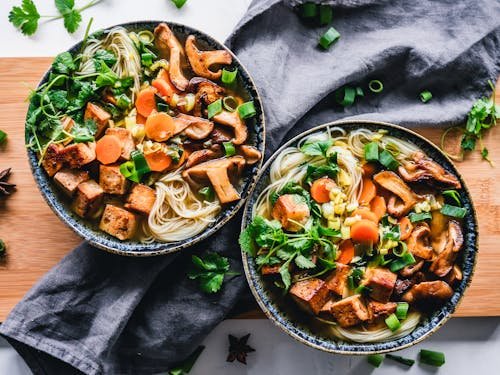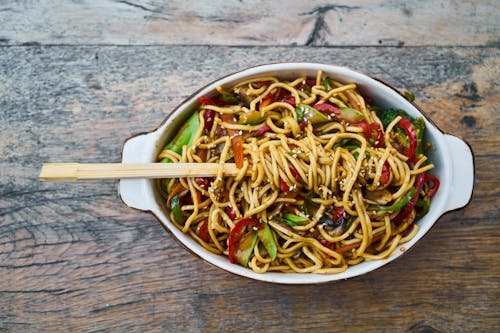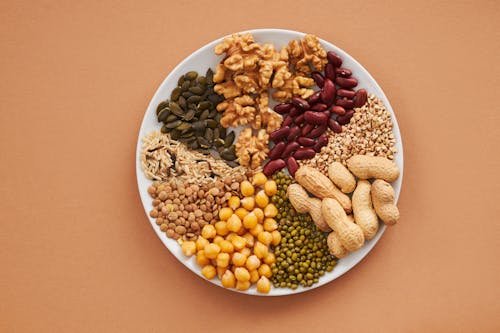Feeling overwhelmed by all the mixed messages about nutrition? Don’t worry—these straightforward tips can help you enjoy nutritious foods and build a balanced diet that boosts both your mood and mental clarity.
What Is Healthy Eating?

Healthy eating isn’t about strict rules, fad diets, or cutting out all your favorite foods. It’s about finding a balanced approach to food that leaves you feeling energized, supports your overall health, and lifts your mood.
With so much conflicting advice out there, it’s easy to feel lost. One minute, a food is labeled a superfood, and the next, it’s on the do not eat list. But rather than focusing on individual foods or nutrients, it’s more helpful to look at your eating habits as a whole. The key is to eat more natural, whole foods—those that are minimally processed and close to how they’re found in nature. This simple shift can make a big impact on how you feel both physically and mentally.
By following a few easy-to-follow tips, you can cut through the noise, enjoy delicious meals, and build a diet that’s nourishing for both your body and mind.
The Basics of Healthy Eating

Despite what some extreme diets may claim, your body and mind need a healthy mix of protein, fats, carbohydrates, fiber, vitamins, and minerals to function at their best. You don’t have to cut out entire food groups—instead, aim to include a variety of balanced options from each category.
Protein, for example, plays a key role in supporting mood and brain function. While too much protein, especially for those with kidney issues, can be problematic, research shows that many people, particularly older adults, could benefit from getting more high-quality protein in their diets. That doesn’t mean loading up on meat. You can meet your protein needs by incorporating a range of plant-based sources, like beans, lentils, tofu, and nuts, into your meals. This helps ensure you’re getting all the essential amino acids your body needs, without overdoing it on any one type of food.
Fat: The Good, the Bad, and the Essential

Fat often gets a bad rap, but it plays a crucial role in many of your body’s functions. It adds flavor to your food, helps you feel full and satisfied after eating, and supports everything from brain health to hormone production. The key is choosing the right kinds of fat.
Not all fats are created equal. Saturated fats, when eaten in excess, have been linked to an increased risk of certain health issues. On the other hand, unsaturated fats—especially omega-3 fatty acids—are essential for both physical and emotional well-being. These healthy fats can support heart health, improve brain function, and even lift your mood.
By adding more sources of unsaturated fats to your diet—like avocados, nuts, seeds, olive oil, and fatty fish—you can enjoy delicious meals while taking care of your long-term health.
Carbohydrates: Fuel for Your Body and Brain

Carbohydrates are your body’s and brain’s primary source of energy, making them an essential part of a healthy diet. But where your carbs come from makes a big difference.
Instead of loading up on refined carbs—like white bread, pastries, and sugary drinks—aim for complex, unrefined sources such as vegetables, fruits, legumes, and whole grains. These provide longer-lasting energy and are packed with fiber and nutrients your body needs.
Making the switch from simple to complex carbs and pairing them with protein and healthy fats helps keep your blood sugar levels steady. This not only supports more consistent energy throughout the day but can also help stabilize your mood.
Fiber: A Key to Feeling Good and Staying Healthy

Foods rich in dietary fiber—like whole grains, fruits, vegetables, nuts, and beans—offer more than just digestive benefits. Eating plenty of fiber helps keep your digestive system running smoothly and can reduce your risk of heart disease, stroke, and diabetes.
Beyond health protection, fiber can also improve your skin’s appearance and support weight management by helping you feel full for longer. Including fiber-rich foods in your meals is a simple way to boost your overall health and well-being.
Making the Switch to a Healthier Diet

Adopting a balanced, nutritious diet doesn’t mean you have to do everything perfectly or give up all the foods you love. It’s also not about changing your entire eating routine overnight—that kind of drastic shift often leads to frustration or falling back into old habits.
Instead, try making small, gradual changes. Setting realistic, manageable goals helps you stick with new habits for the long haul without feeling deprived or overwhelmed. Think of it as taking one step at a time—like adding a salad to one meal each day. As these small changes become part of your routine, you can gradually build on them and enjoy a healthier, more satisfying way of eating.
Add More Fruits and Vegetables to Your Diet

Fruits and vegetables are nutritional powerhouses, loaded with vitamins, minerals, antioxidants, and fiber. Aim to eat at least five servings a day—it’s a great way to naturally fill up and nourish your body. Just remember, a serving could be half a cup of raw veggies or fruit, or something like a small apple or banana. Most of us need to double what we’re currently eating to hit that target.
Here are some easy ways to add more fruits and veggies to your meals:
- Sprinkle antioxidant-rich berries on your morning cereal or yogurt
- Enjoy a colorful mix of sweet fruits like oranges, mangoes, pineapple, and grapes for dessert
- Swap out your usual rice or pasta side for a vibrant salad
- Snack on crunchy veggies like carrots, snow peas, or cherry tomatoes with a tasty hummus or peanut butter dip
Conclusion
Healthy eating isn’t about perfection—it’s about making smarter, more mindful choices that support your body and mind. By focusing on whole, nutrient-rich foods and making small, sustainable changes, you can build a balanced diet that works for your lifestyle. Whether it’s adding more fruits and vegetables, choosing healthy fats, or swapping refined carbs for whole grains, every positive step counts. Over time, these small changes can lead to big improvements in how you feel, look, and live. Remember, it’s not about short-term fixes—it’s about creating long-term habits that help you thrive.
